Ancient Village of Nashtifan: Whispers of History
Nashtifan, Iran, is a historical village located in the Tabas desert, offering a unique blend of cultural heritage and natural beauty.
This ancient settlement boasts centuries-old windmills, stunning mudbrick architecture, and a vibrant local community that warmly welcomes visitors. From exploring historical sites to savoring delicious Persian cuisine, ancient village of Nashtifan promises an unforgettable experience for travelers seeking a glimpse into authentic Iran.
History of Nashtifan
Nashtifan's story begins long ago, echoing back to the Sassanid era (224-651 AD). Its strategic location along the ancient Silk Road, a vital trade route linking East and West, laid the foundation for the village's prosperity. Merchants from far-off lands traversed the dusty paths, exchanging exotic goods and cultural influences that shaped the village's character.
As centuries passed, Nashtifan thrived as a commercial hub. Caravanserais, bustling centers of trade and accommodation, sprang up to cater to weary travelers. Craftsmanship flourished, with skilled artisans producing intricate carpets, pottery, and textiles. The village became known for its vibrant markets and diverse population, a testament to its role as a melting pot of cultures.
However, the harsh desert environment and the changing tides of history presented challenges. Earthquakes and nomadic raids threatened the village's stability, forcing residents to adapt and rebuild. Yet, through resilience and innovation, Nashtifan endured. The villagers built underground tunnels for shelter and storage, and honed their skills in water management, harnessing the wind to power their ingenious windmills.
Today, ancient village of Nashtifan stands as a living testament to its rich history. The ancient windmills continue to spin, silently recounting tales of ingenuity and perseverance. The mudbrick houses, with their centuries-old designs, whisper of a time gone by. And the spirit of the Silk Road lives on, reminding us of the interconnectedness of cultures and the enduring power of human spirit.
| Learn about: Shahr-e Sukhte | The Beginning of Civilization in 3200 BC
Architecture of Nashtifan Village
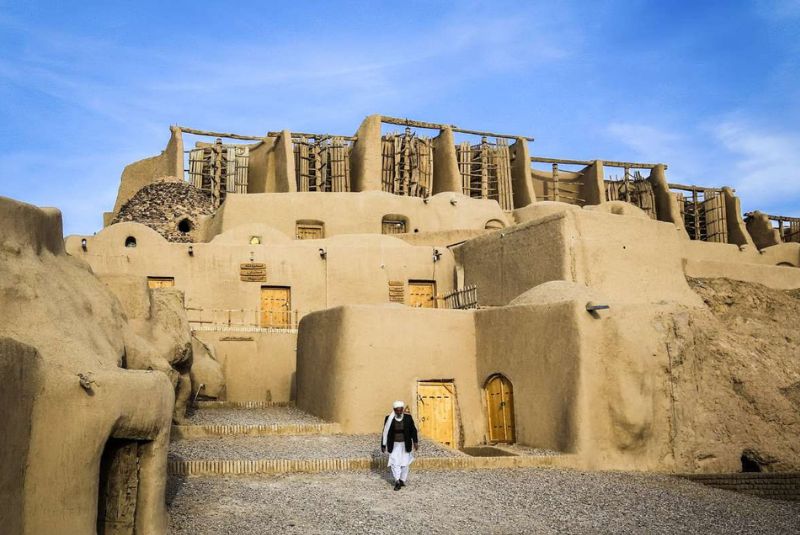
The architecture of Nashtifan is a captivating blend of functionality and beauty, perfectly adapted to the harsh desert environment. The primary material used is mudbrick, offering excellent insulation against the scorching summer heat and the biting winter cold. Houses are built close together, creating narrow, winding streets that provide shade and shelter from the wind.
Stepping inside a traditional mudbrick home, you'll find a haven of simplicity and comfort. The thick walls keep the interior cool, while the natural materials create a warm and inviting atmosphere. Inside, you'll discover intricately woven carpets, hand-painted ceramics, and antique furniture, each piece reflecting the rich cultural heritage of the village.
| Read more: Persian Architecture
How to Get to Ancient Village of Nashtifan
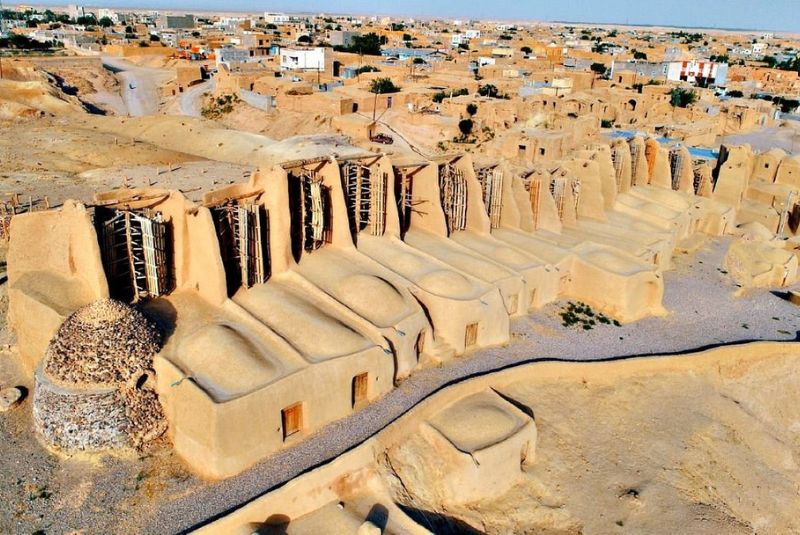
Nashtifan lies nestled amidst the vast Tabas desert in the Khorasan Razavi province of Iran. This captivating village, approximately 400 kilometers southeast of Mashhad, offers a unique experience for travelers seeking a glimpse into authentic Iran.
Reaching Nashtifan is an adventure in itself. While the journey might seem daunting, the rewards upon arrival are well worth the effort. Here are the different transportation options available:
- By Bus: Regular buses operate from Mashhad and other major cities in the region, making it a convenient and budget-friendly option. The journey takes approximately 8-10 hours, depending on traffic.
- By Train: For a more scenic journey, consider taking the train from Mashhad. The train journey takes around 7 hours and offers breathtaking views of the desert landscape.
- By Taxi: Taxis provide the fastest and most comfortable option for reaching Nashtifan, although they are also the most expensive. You can hire a taxi from Mashhad or negotiate a fare with local drivers in other nearby towns.
Windmills of Nashtifan
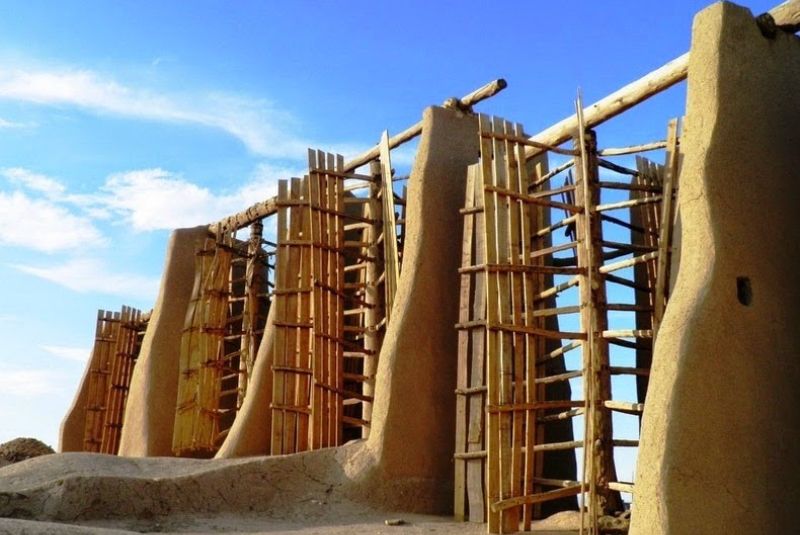
Standing tall amidst the vast expanse of the Tabas desert, the windmills of Nashtifan are not just iconic landmarks, but also tangible symbols of the village's ingenuity and resilience. These towering structures, crafted from wood and mudbrick, have stood for centuries, harnessing the power of the wind to grind grain and provide sustenance for generations.
The windmills of Nashtifan are a marvel of engineering. Their design is simple yet effective, utilizing the principle of natural ventilation to capture the wind and convert its energy into usable power. The blades of the windmills, catching the desert breeze, rotate a central shaft that in turn drives the grinding stones below. This simple mechanism has allowed villagers to grind their own flour for centuries, ensuring their self-sufficiency in the face of a harsh environment.
Beyond their practical use, the windmills are works of art in their own right. Each windmill stands as a unique individual, with variations in size, shape, and ornamentation. Some windmills are adorned with colorful tiles, intricate geometric patterns, or even whimsical figures, reflecting the creativity and artistic spirit of the villagers.

Climbing to the top of a windmill offers a breathtaking panorama of the village and its surrounding landscape. From this vantage point, you can appreciate the vastness of the desert, the intricate network of mudbrick houses, and the vibrant community that thrives in this seemingly barren environment. The windmills, standing tall against the endless horizon, serve as a reminder of human ingenuity and the power of adaptation.
The windmills of Nashtifan are not just relics of the past; they are living testaments to the enduring spirit of the village. Their continued use today speaks volumes about the villagers' respect for their heritage and their commitment to preserving their traditional way of life.
Here are some interesting facts about the windmills of Nashtifan:
- There are over 40 windmills still standing in the village today, although only a few are still in operation.
- The windmills are known locally as " آسیاب های بادی نَشْتِفان " (Aasiab-haaye Baadi-ye Nashtifan).
- The windmills were built using locally available materials, including wood, mudbrick, and straw.
- The windmills are a popular tourist attraction and are often featured in photographs and documentaries.
- The windmills are considered to be a symbol of the village's resilience and resourcefulness.
| Discover: Iran Windcatchers
Nashtifan Attractions and Landmarks
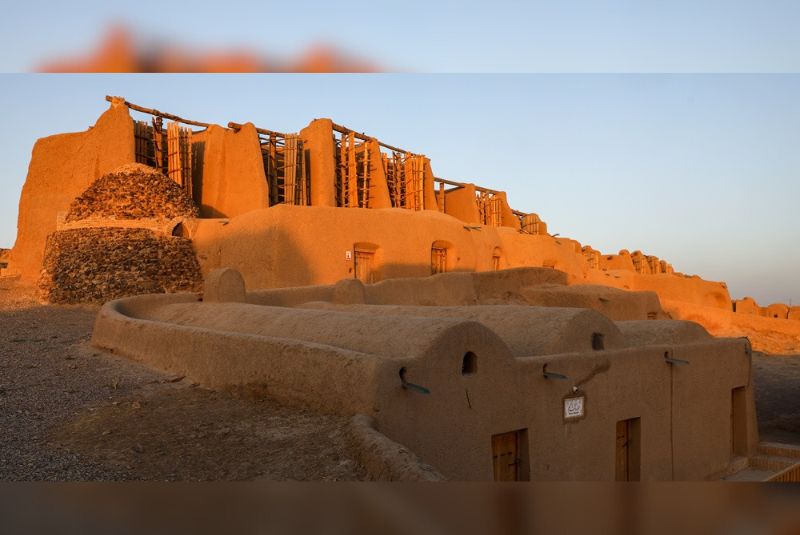
Stepping into Nashtifan is like stepping back in time, a treasure trove of captivating attractions and landmarks that speak volumes about its rich history and vibrant culture. Here are some of the must-visit sites that will leave an indelible mark on your memory:
- Jameh Mosque: This majestic mosque, dating back to the 11th century, is the heart and soul of the village. Its imposing brickwork, intricate tilework, and elegant minaret are a testament to the architectural prowess of past generations. The serene atmosphere inside invites contemplation and reflection, while the intricate details offer a glimpse into Islamic art and design.
- Caravanserai: This ancient caravanserai, once a bustling hub for merchants traveling the Silk Road, stands as a silent witness to the village's prosperous past. Its imposing entrance, spacious courtyard, and arched chambers whisper tales of long-distance trade and cultural exchange. Explore the caravanserai and imagine the caravans arriving laden with exotic goods, merchants exchanging stories, and the vibrant atmosphere that once filled this historic site.
- Underground City: The fascinating world of the underground city, a network of tunnels and chambers carved into the earth centuries ago. This intricate network served as a refuge and storage space for the villagers, offering protection from harsh weather and nomadic raids. Explore the cool, dark tunnels and imagine the lives of those who sought shelter within its depths, gaining a deeper understanding of their resilience and resourcefulness.
- Qal'eh Nashtifan: Perched atop a hill overlooking the village, the ruins of Qal'eh Nashtifan whisper tales of ancient power and defense. This once-mighty fortress, dating back to the Sassanid era, guarded the village from invaders and served as a symbol of authority. Explore the crumbling walls and imagine the battles fought and the lives lived within its ramparts, allowing history to come alive before your eyes.
| Have plans to visit Nashtifan? Discover Mashhad Tourist Attractions
Nashtifan Local Culture

Beyond its breathtaking landscapes and historical landmarks, the true magic of Nashtifan lies in its vibrant local culture. Here, you'll encounter a community steeped in tradition, where warmth and hospitality are woven into the very fabric of everyday life.
One of the most striking aspects of Nashtifan's culture is its deep connection to the land. The villagers have learned to adapt and thrive in the harsh desert environment, developing a profound respect for nature and its resources. This connection is evident in their traditional practices, such as water conservation techniques and the utilization of natural materials in their homes and crafts.
The local dress in Nashtifan reflects a blend of practicality and cultural pride. Women often wear colorful headscarves and long, flowing dresses, while men favor simple yet elegant attire. These traditional garments are not just a matter of fashion, but a symbol of their identity and heritage.
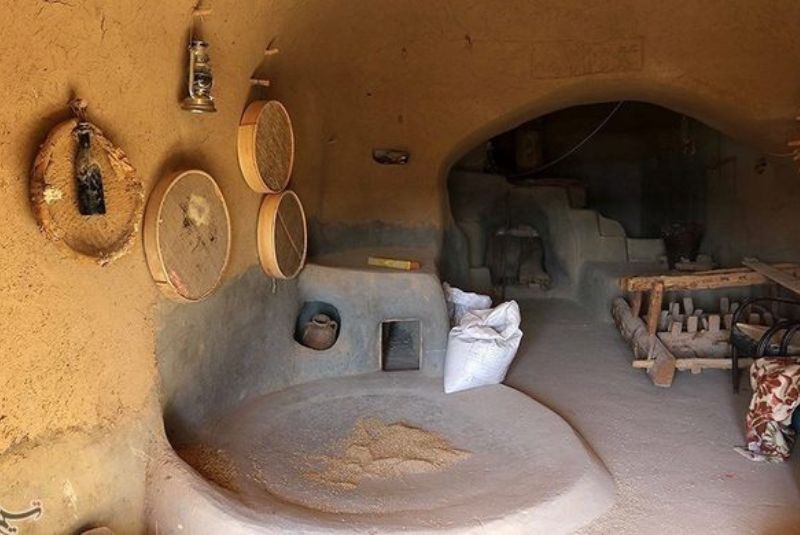
Hospitality is a cornerstone of Nashtifan's culture. Visitors are welcomed with open arms and treated like honored guests. You'll often be invited into homes for tea and conversation, experiencing firsthand the warmth and generosity of the local people.
Music and dance are integral parts of life in Nashtifan. Traditional instruments like the daf (tambourine) and ney (flute) fill the air with rhythmic melodies, while villagers gather to perform lively dances that celebrate their heritage and community spirit.
Storytelling plays a significant role in preserving and transmitting cultural knowledge. Elders gather in teahouses and homes, sharing tales of past generations, historical events, and local folklore. These stories, passed down through the years, ensure that the village's rich history and traditions remain vibrant for future generations.
Nashtifan Souvenirs
Nashtifan offers a treasure trove of unique and authentic souvenirs that allow you to take a piece of its magic back home. These handcrafted items, made with love and skill, reflect the village's rich cultural heritage and offer a tangible reminder of your unforgettable experience.
Here are some of the must-have souvenirs from Nashtifan:
- Handmade carpets: Renowned for their intricate designs and vibrant colors, Nashtifan carpets are a true work of art. Each rug is hand-woven using traditional techniques, passed down through generations, and tells a unique story through its patterns and motifs. Whether you choose a small wall hanging or a larger rug for your home, a Nashtifan carpet will be a cherished possession for years to come.
- Hand-painted pottery: The village is famed for its intricate and colorful pottery, crafted using local clay and adorned with traditional designs. From decorative plates and teacups to intricate vases and figurines, each piece of pottery is a unique masterpiece, showcasing the skill and artistry of local artisans.
- Textiles: Nashtifan's textile tradition boasts a diverse range of hand-woven fabrics, including shawls, scarves, and tablecloths. These textiles are often adorned with vibrant embroideries and intricate patterns, reflecting the village's rich cultural heritage. Whether for personal use or as a gift, a piece of Nashtifan's textiles will add a touch of elegance and authenticity to any wardrobe or home.
- Metalwork: The village boasts a thriving metalwork tradition, with skilled artisans crafting intricate jewelry, decorative objects, and household utensils. From delicate silver necklaces adorned with turquoise stones to hand-forged ironwork, each piece is a testament to the skill and creativity of the local craftsmen.
- Local delicacies: Take home a taste of Nashtifan with its delectable local specialties. Saffron, a precious spice cultivated in the region, is a must-have souvenir, along with dried fruits, nuts, and delicious jams. You can also find locally produced honey, dates, and other treats, each offering a unique and authentic flavor experience.
| Suggestion: Things to Bring Back From Iran
Best Time to Visit Nashtifan

While Nashtifan is a year-round destination, the best time to visit is during the spring (March-May) or autumn (September-November). During these months, the weather is pleasant, with warm days and cool nights. Summer temperatures can be scorching, while winter nights can be very cold.
Nashtifan Location
A Village Forever Etched in Memory
Whether you seek adventure in the desert sands, historical insights within olden walls, or a peaceful retreat amidst breathtaking landscapes, the ancient village of Nashtifan has something to offer everyone. So, pack your bags, embrace the spirit of adventure, allow the wind to guide you through its charming streets, and let the soul of Persia whisper its secrets in your ear.
Share your story!
Comment below and let us know about your Experience.
Your story inspires others!


Comment
Leave a Comment